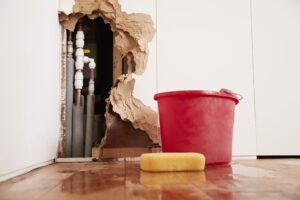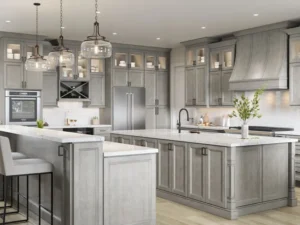The Cost of Hiring a Solid Plasterer: What to Expect
Warning: Attempt to read property "post_excerpt" on null in /home/u579354370/domains/techywoldnews.com/public_html/wp-content/themes/newsphere/inc/hooks/hook-single-header.php on line 67
When planning to renovate your home or undertake a new construction project, solid plastering is one of the most important finishing touches. A solid plasterer is responsible for creating smooth, durable surfaces on walls and ceilings, making them ready for painting or other decorative finishes. Understanding the costs associated with hiring a solid plasterer can help homeowners budget effectively and avoid unexpected expenses. This article delves into the various factors that influence plastering costs, what services to expect, and tips for making the most of your investment.
What Does a Solid Plasterer Do?
Solid plasterers specialize in applying plaster to walls, ceilings, and other surfaces to achieve a smooth or textured finish. Their work is essential for both aesthetic and functional reasons, as it protects surfaces and prepares them for final touches like paint or wallpaper. Solid plasterers may work with a range of materials, including cement, lime, gypsum, or acrylic-based plaster.
Their responsibilities typically include surface preparation, mixing and applying plaster, and ensuring a high-quality, long-lasting finish. They may also repair damaged plasterwork or apply ornamental features such as cornices and ceiling roses.
Factors That Influence the Cost of Hiring a Solid Plasterer
Several key elements can affect how much you’ll pay for a solid plasterer. While national averages provide a baseline, regional pricing, the complexity of the work, and the materials used can significantly change your final bill.
Type of Plastering Work
The specific kind of plastering job has a major impact on the cost. External rendering, internal wall plastering, ceiling work, and ornamental features all come with different pricing structures.
- Internal Plastering: This involves applying a smooth finish to interior walls. It is usually less expensive than external work, with prices ranging from $20 to $70 per square meter depending on the complexity and finish required.
- External Rendering: This protects the exterior walls from weather and enhances curb appeal. It often involves more labor and materials, making it more expensive—usually between $45 and $120 per square meter.
- Ornamental Plastering: Decorative moldings and ceiling work are more intricate and may cost more due to the skill and time involved.
Size and Scope of the Project
Larger projects typically offer better value per square meter but still result in a higher overall cost due to the greater amount of labor and materials needed. Small patch jobs or repairs might seem cheaper but often come with a minimum service fee that drives up the price per square meter.
Type of Property
The nature of the building can influence plastering costs. Older homes may have uneven surfaces that require more prep work, while modern buildings might allow quicker application. High ceilings, staircases, and detailed architectural features also increase complexity and, therefore, cost.
Quality of Finish
A high-end finish requires more time, skill, and materials. A standard smooth finish is more affordable, while polished plaster, Venetian finishes, or textured effects will be more expensive. The type of finish you choose directly impacts the quote you receive from a solid plasterer.
Location
Where you live plays a significant role in labor costs. Major cities tend to have higher prices due to increased demand and higher living costs. Rural areas may be less expensive, but the availability of skilled tradespeople might be limited, potentially increasing costs if travel is required.
Materials Used
Plaster materials range in cost and quality. Lime or clay-based plasters are typically more expensive than cement or gypsum. The choice of material should be discussed with your solid plasterer to strike a balance between aesthetics, durability, and budget.
Average Cost Estimates
Though every job is unique, average cost guidelines help provide a general idea of what to expect:
- Internal wall plastering: $20–$70 per m²
- External rendering: $45–$120 per m²
- Ceiling plastering: $25–$90 per m²
- Decorative cornices or features: Priced individually or by meter, often starting at $10 per linear meter
Always request a detailed quote from multiple solid plasterers to compare pricing and understand what’s included.
What to Look for in a Professional Solid Plasterer
Hiring the right plasterer can mean the difference between a flawless finish and a costly redo. A reputable solid plasterer should offer the following:
- Experience and Qualifications: Check for relevant trade licenses, insurance, and references.
- Portfolio of Past Work: Review previous projects to gauge the quality of work and variety of finishes.
- Clear Communication: A professional will offer a detailed quote, explain the process, and set realistic timelines.
- Warranty or Guarantee: Some tradespeople offer a guarantee for their work, adding peace of mind.
Additional Costs to Consider
While the plastering itself is the main cost, don’t overlook related expenses that may affect your budget:
- Surface Preparation: Damaged walls may require repair before plaster can be applied, which can incur extra costs.
- Scaffolding or Access Equipment: Necessary for high or hard-to-reach areas, particularly for external rendering.
- Waste Removal: Some plasterers include clean-up, but others may charge for debris removal.
- Painting and Finishing: Plastering is usually a precursor to painting, so factor in those future costs.
Tips for Reducing Costs Without Sacrificing Quality
- Get Multiple Quotes: Always compare at least three solid plasterers to ensure you’re getting competitive pricing.
- Bundle Jobs Together: Doing multiple rooms or exterior and interior work at once may reduce the cost per square meter.
- Opt for Standard Finishes: Unless you have a specific design in mind, standard smooth plaster is cost-effective and looks clean.
- Schedule in Advance: Last-minute jobs may come at a premium. Scheduling during a contractor’s slower season can yield savings.
Conclusion
Hiring a solid plasterer is an investment in the quality and appearance of your home. While costs vary depending on the size, complexity, materials, and location of your project, understanding these factors can help you budget wisely. Always work with experienced professionals, request detailed quotes, and don’t shy away from asking questions about the materials and methods they use. By doing your research and planning carefully, you’ll ensure that the final result not only looks fantastic but also stands the test of time.





